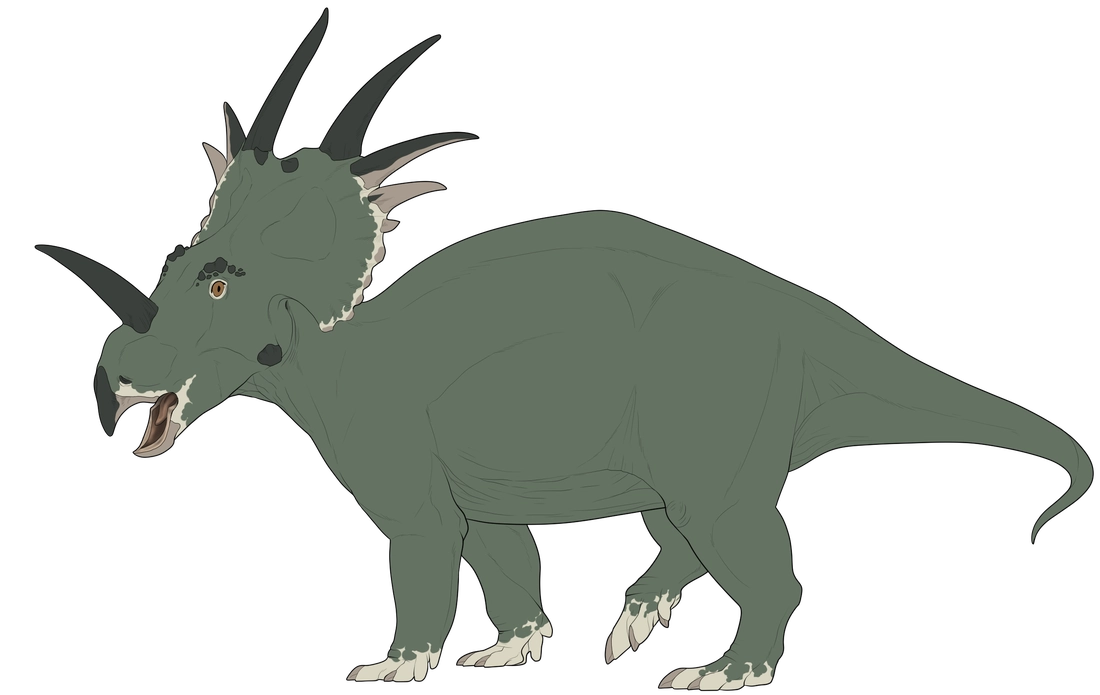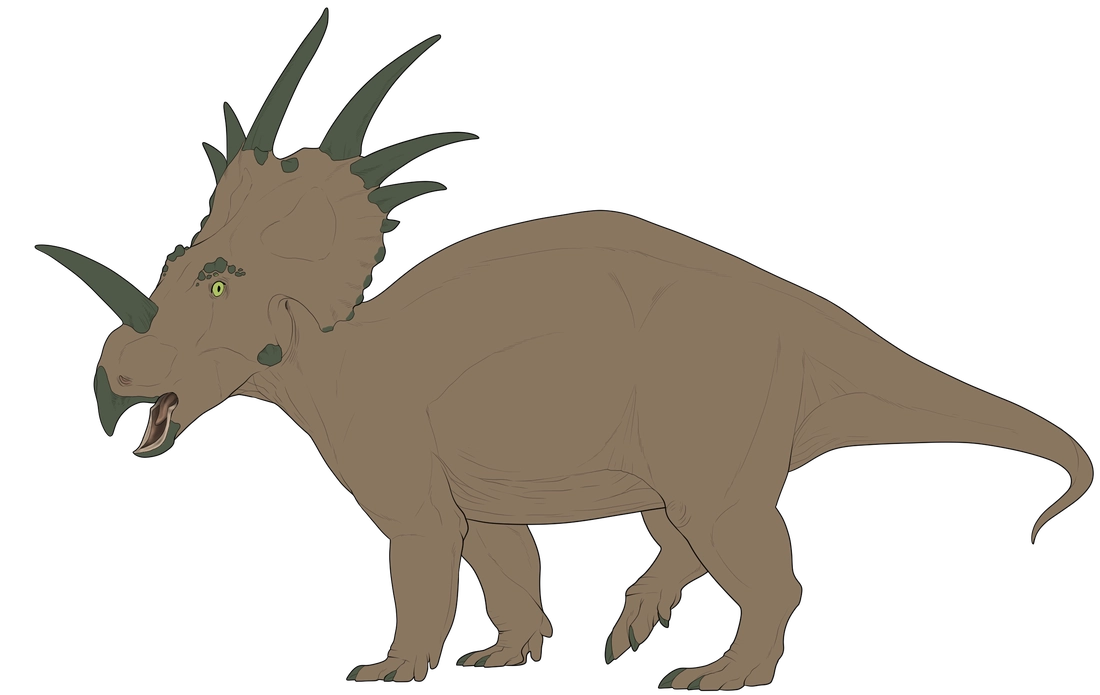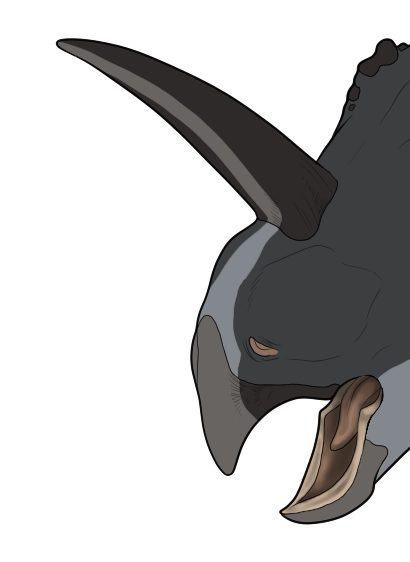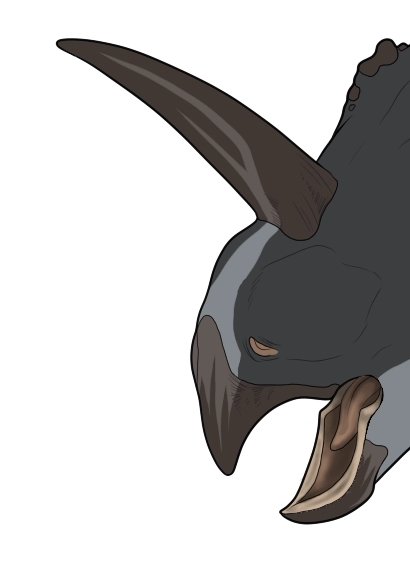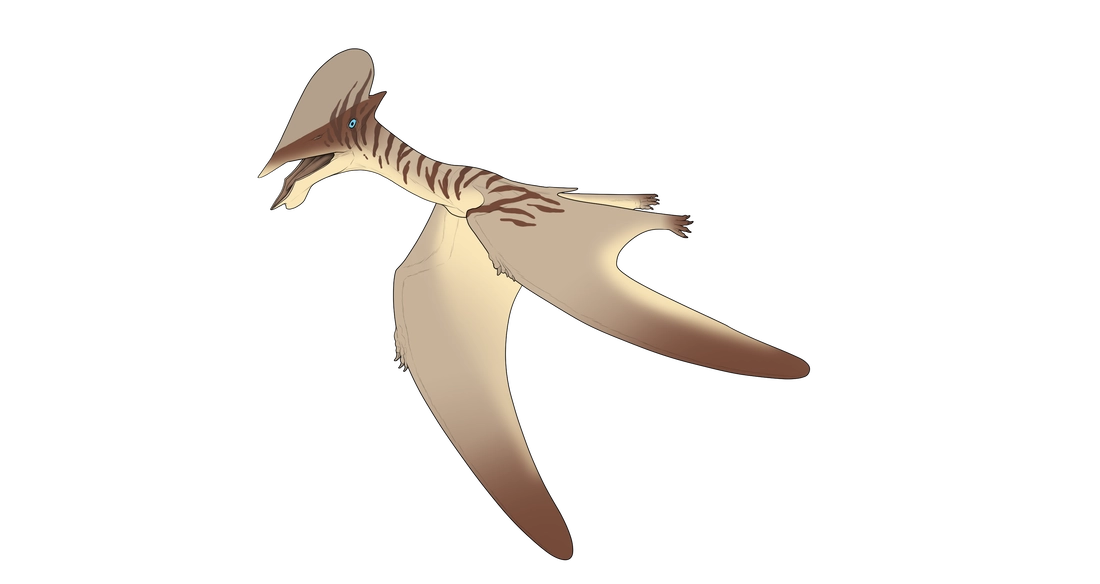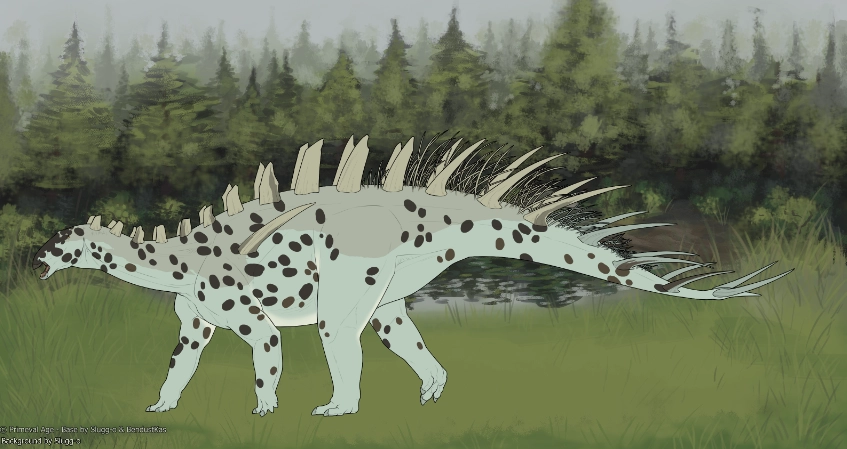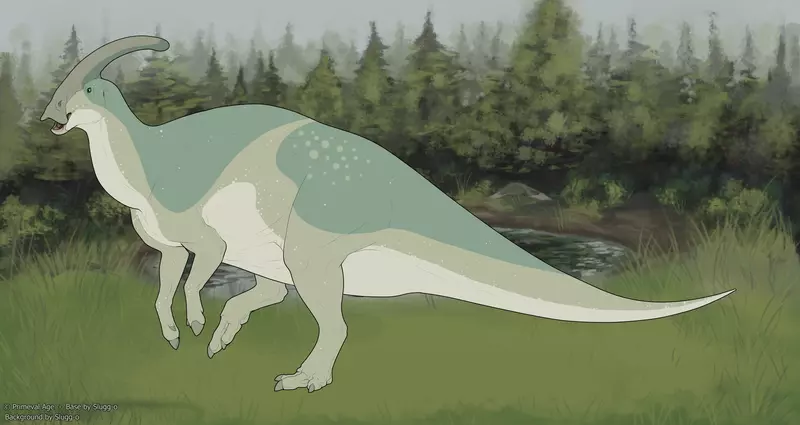Skip to:
- Keratin Areas - Natural Colors - Color Modifiers - Gradients - Striping - Dimorphics -
What Is Keratin?
The following always count as keratin
Essentially, all import PSDs have a layer named 'Extras' which contains the eyes, nostrils and keratin areas. Anything other than the eyes and nostrils on this layer follows the keratin rules found in this guide. But here is a more specific list:
- Nails, claws and hooves
-- Applies to all except Atopodentatus and Aristonectes - Horns, spikes and osteoderms
-- Applies to Carnotaurus, Dacentrurus, Pachycephalosaurus, Shunosaurus, Styracosaurus
-- Does not apply to spikes from the Spiked variant outside the 'Extras' layer; these follow normal marking rules - Beaks
-- Applies to all herbivores except Atopodentatus and Shunosaurus
-- Fliers do not have keratin beaks - Quills
-- Applies to any dinosaur with the Quilled variant - Atopodentatus 'teeth'
-- These are like baleen whale bristles
Some dinosaurs have optional keratin
Some import PSDs will have an additional layer named 'Optional Keratin'. Anything on this layer can either follow keratin rules or you can hide the layer and follow normal marking rules as if it was skin; but it can not be a mix of the two. You get to choose if this area is keratin or not!
- Crests
-- Applies to Parasaurolophus and Tapejara
-- Does not apply to Acrocanthosaurus, Albertosaurus, Cryolophosaurus, these follow normal marking rules - Plates
-- Applies to Dacentrurus - Thorny and Exoskeleton mutations
-- These allow you to add spikes and plates, respectively, as optional keratin
-- Thorny can also affect any existing keratin areas
Keratin rules will often refer to 'the grain'
This is the direction in which keratin grows! For example, claws and horns have a base to the structure where they meet the body, and the keratin will continue to grow outwards, just like modern animals. The grain follows this growth pattern and natural curves of the keratin structure, starting at the base and ending at the tips or furthest edges.Natural Colors
Keratin must be natural colors, and appear natural on your import. There is no specific color palette, however there are a few guidelines for picking keratin color. Keratin colors are compared to the dinosaur's visible base using the rules below. When a marking touches keratin; you can choose to make all keratin touching that marking a different color to the 'base' keratin color, as long as that color also follows the rules. If a single marking has two differently colored parts or is two-toned, both colors in the marking can count as 'separate' markings for keratin color changes.
- Must follow the same color rules as markings in regards to saturation and darkness!
-- See the natural color section of the Marking Guide - Beige, browns, yellows, tans, off-whites, dark greys, etc. are acceptable regardless of base color.
- Green, blue, red, pink and purple are restricted to matching bases or touching markings with those hues.
- Keratin can not be pure white or darker than the darkest part of the Curse swatch.
- For dinosaurs with color modifiers, these rules still apply.
-- See the color modifier section
Correct examples
Incorrect examples

This example is incorrect because you cannot have pure white keratin! A single marking can't cause multiple keratin colors; if a marking is affecting keratin, all keratin being touched by it should be the same color.

This example has a full color change on the crest and cheek keratin, making the keratin inconsistently affected by the white marking. The keratin touching the marking should either be all brown, or all tan, but not both.
Color Modifiers
Dinosaurs with color modifiers still follow the normal keratin rules when it comes to colors! So green, blue, red, pink and purple keratin is still restricted to matching bases or touching markings with those hues.
However, using desaturated tones that are color-picked from color modifier swatches will lift these restrictions! For example, a brown-ish base chosen from the desaturated parts of the Volcanic swatch will count as a 'red' base despite the dinosaur visually appearing brown. This would allow the dinosaur to have bright, saturated red keratin from other parts of the swatch!
Color modifiers of a hue that count as normal natural colors for keratin, can be used on keratin alongside any base color, without it counting as unnatural. For example, the Luminous color modifer is yellow and can be used alongside all bases.Correct examples
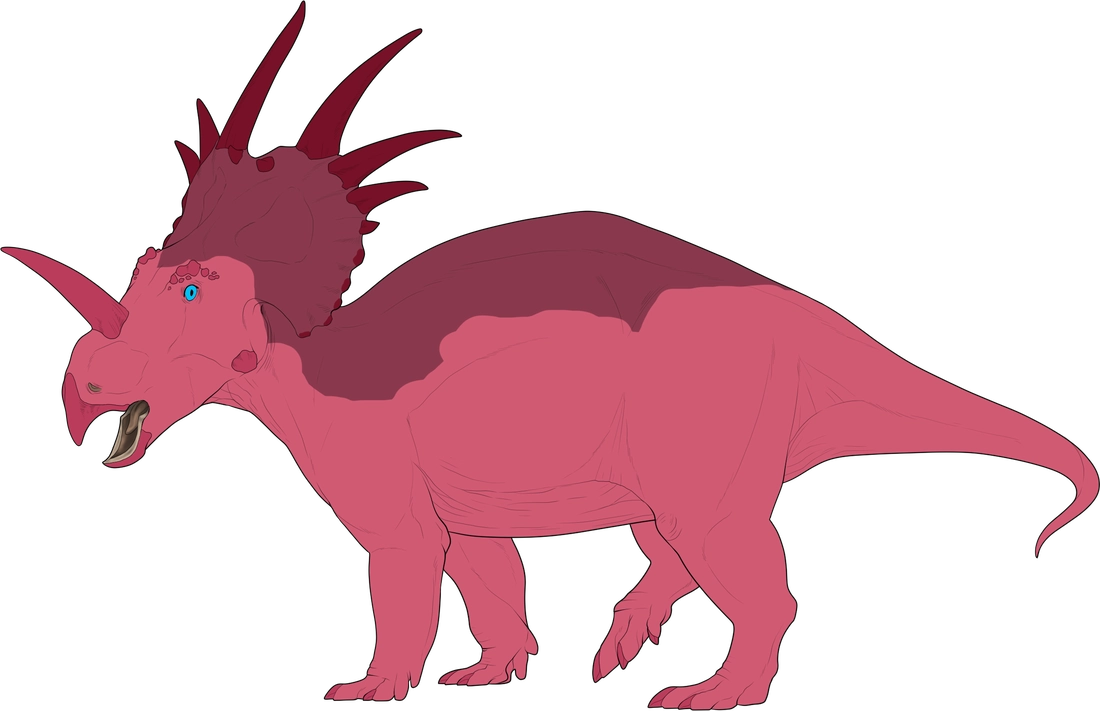
This example is correct as the whole dinosaur is Tropical, so the keratin can be pink! The keratin presents color changes when affected by markings which correctly follow normal rules.
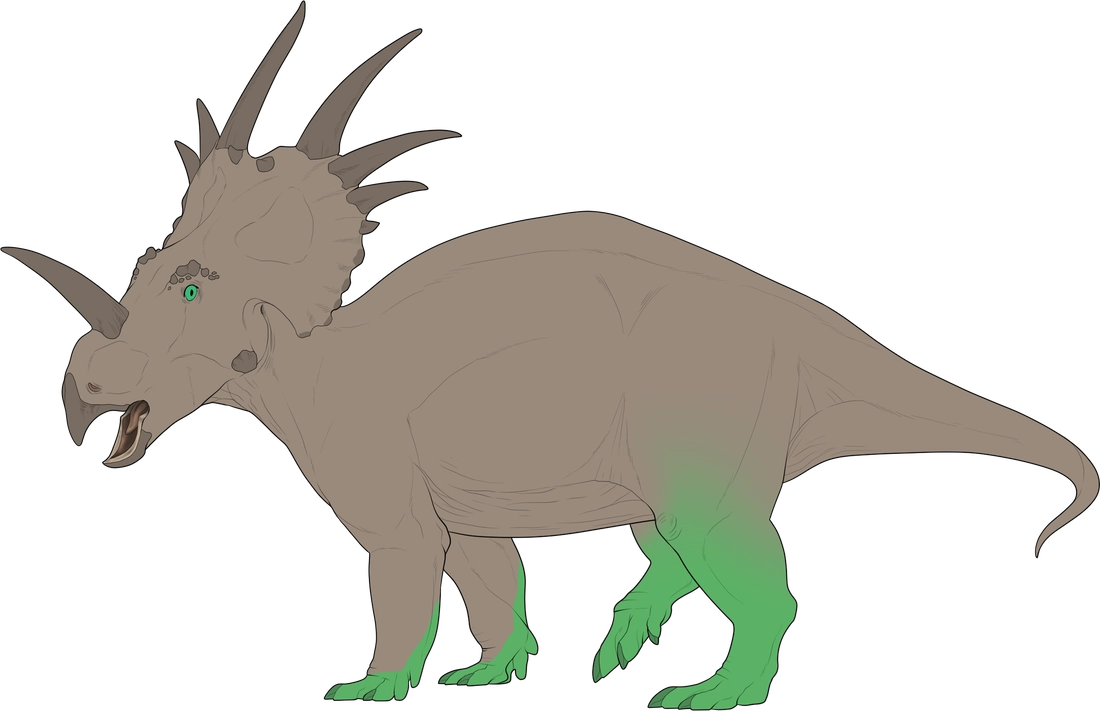
This example has markings affected by Verdant, so keratin touching those markings can be green! The base is naturally brown, so keratin touching those areas can not be green.

This import's base has been replaced with a brown color picked from the Volcanic swatch. Despite appearing brown, the base will count as red, which allows for bright red Volcanic keratin.

Luminous is only affecting the keratin! Since yellow is a natural color, all keratin can use colors from the Luminous swatch without having to be touched by a Luminous affected marking.
Incorrect examples

Color modifier dinosaurs still need to follow the keratin rules. This dinosaur has a natural brown base color so they can't have pink keratin without a pink marking touching it!
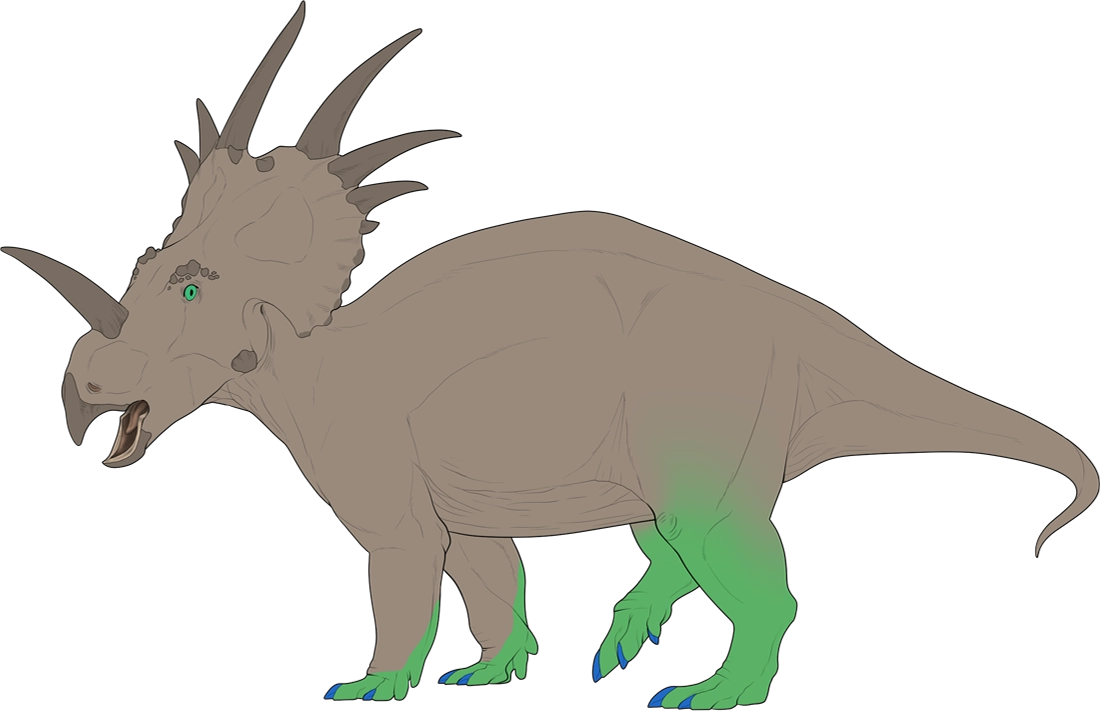
This example has two color modifiers; the Verdant markings don't allow Celestial's blue keratin. Even though the feet are using a color mod, the keratin can't be blue unless touching a blue marking or the base is blue!

All of this import is being affected by Tropical. The keratin can be pink in all areas here, however the color change is incorrect. The lowest neck spike from Thorny and the hand claws are different colours, despite not having a marking in either area to cause this change. They should be the same color!
Gradients
Keratin may feature an additional gradient if you so desire! Keratin does not need to be affected by a marking to display a gradient. The gradient should be a single color following the grain of the keratin. The gradient does not need to be present on all of the keratin if you choose to add one.
If keratin has had its 'base' color changed due to being affected by a marking; each unique color can have its own independent gradient color. This gradient color should remain consistent for each area of keratin that is being affected by the same marking and choosing to display a gradient.Correct examples
Incorrect examples

You cannot go against the grain of the keratin when forming a gradient, unless its following the edge of a gradient marking.

This example is incorrect because you cannot create any patterns with gradients, such as banding or striping.
Striping
When a marking touches keratin, it may create striping! To create striping there must be a marking causing it.
Striping doesn't need to be consistently applied wherever a single marking touches keratin; striping could only affect one horn or claw, even if all other keratin is touched by the same marking. However, striping shouldn't fully fill in a keratin structure otherwise that would be a color change!
Striping must lighten the keratin color if the marking touching it is lighter than the keratin, and must darken the keratin color if the marking touching it is darker than the keratin.
Striping should follow the grain of the keratin, a nice modern reference for this would be appaloosa horse hooves! Keratin can present striping and a gradient at the same time, even on the same horn or claw, etc.
Correct examples
Incorrect examples

Stripes cannot go against the grain, nor can you 'tip' keratin. The base of a stripe must match the width of the marking causing it, which makes the beak incorrect.

This example is incorrect because the striping is going against the grain. The striping is also forming an unnatural spiral shape and creating tips on the ends of the keratin!
Additional examples
For keratin that has a different shape from the traditional "horn", the striping will follow the natural curves.Dimorphics
Keratin is an allowed area for dimorphic markings
These are male markings inherited from the dinosaur's male ancestors and are specific to their lineage; they have their own separate guide here.
If the dimorphic marking is the keratin itself, you can ignore all color restrictions, as well as all gradient and striping rules. The dimorphic should still follow all dimorphic rules, however. If the dimorphic marking is not the keratin itself, but touches the keratin, you can create striping from the dimorphic marking following normal keratin rules. Striping caused by a saturated dimorphic marking would still be restricted to colors from the natural swatch.





